Hey there! This post contains affiliate links to products. We may receive a commission for purchases made through these links. But it never influences our product selection process.
Can’t you enjoy driving similar to the previous one? Then, check out the engine oil and filter. Most of the time, metal shaving in oil triggers an unpleasant driving experience. You may count seeing the metal shaving in oil as a bad day. But, this scenario isn’t as bad as you think. However, you need to be careful whenever you detect metal flakes in oil. Don’t worry; some portions of metal shaving in oil are normal.
So, how much metal in oil is normal? It seems normal if you find the metal in oil is lower than the broken lead pencil (lower than the diameter 1/16 inch). Besides, less than ¼ teaspoon of metals, whiskers, or flakes in oil is also acceptable. The average mileage for showing metals in oil is 10,000 miles.
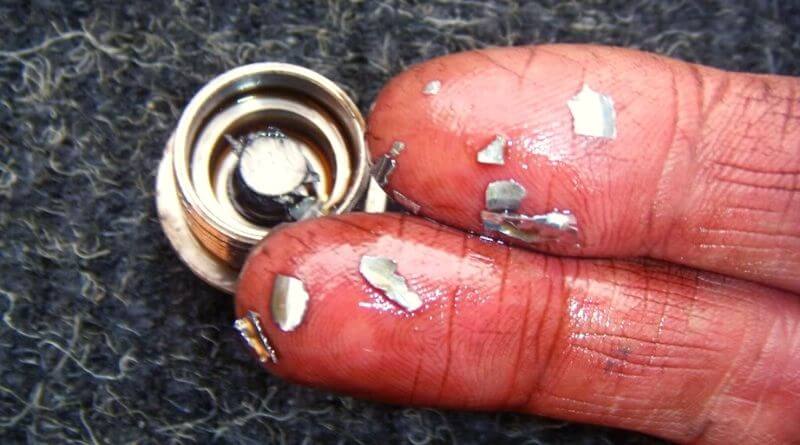
If you find any of our mentioned symptoms, you have better bring your vehicle to the repair shop. Otherwise, it will lead to serious damage to your engine. Today, all our discussion is related to metal in the oil. Hopefully, it will help you significantly.
What Is Metal Shavings In Oil?
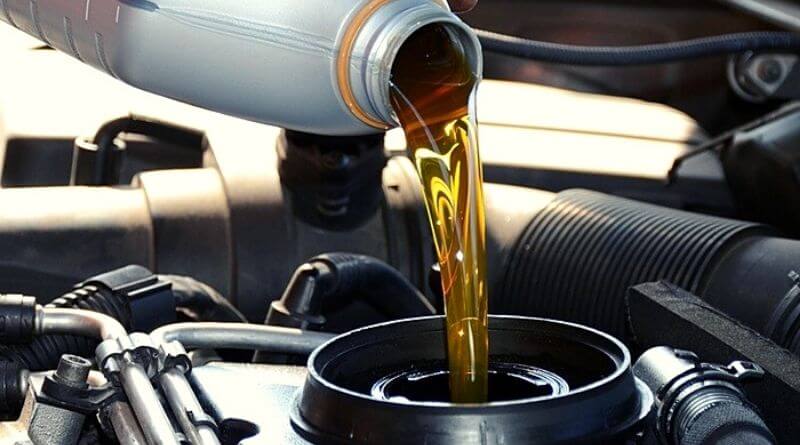
Metal shavings are referred to as small metal particles in the engine oil. These are also called metal debris, flakes, and chippings. The continuous friction of oil in the engine moving parts make them contaminated with debris, for example, metal shavings.
Mostly, you’ll find metal shavings in oil filter, crankcase and dipstick.
Metal in oil isn’t an uncommon activity; instead some portion of it in oil is fairly common. Although some portion of metal in oil is reasonable, it may shorten the engine life or demand expensive repairs.
What Causes Metal Shavings In The Engine?
Our vehicle comes with multiple moving parts. Almost all of those are metal. Sometimes, the oil starts breaking down and can’t ensure proper lubrication. Therefore, it causes metal to start grinding each other and results in metal in oil.
For example, suppose an engine runs at 2500 RPM, all the installed metal parts start rubbing against each other. Because of the shortage of proper lubricant, the heat and friction between metal parts create small metal shaving.
How Much Metal In Oil Is Normal?
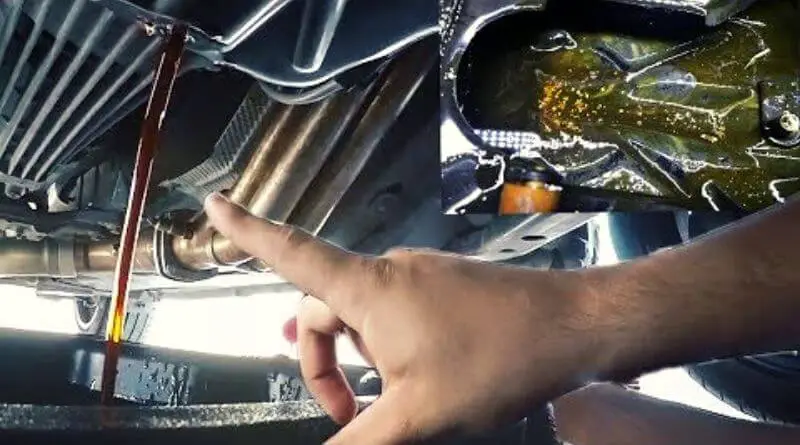
After passing a long period in the engine, engine oil may gather various metal flakes. Hope that you know the oil filter helps to catch metal flakes. But, if any problem occurs in that part, the filter can’t effectively catch those metal flakes.
Typically, those small items could be steel from the crankshaft, bearing backing materials, or other components of your engine.
We already mentioned that metal’s existence in oil isn’t unusual; instead, it’s pretty normal after a long period. You may have a question like how much distance or time is liable to gather metal in the oil.
Against that question, we found that the average mileage for showing metals in oil is 10,000 miles. But, before passing 5000 miles, noticing metal flakes isn’t normal. You need to be alarmed by that. So, the question is, “how much metal in oil filter is normal.”
On the contrary, if you notice a good amount of metal in the oil filter, for example, 20 to 40 metal particles, you need to immediately change your engine oil and oil filter. Then, you need to inspect the filter within 10 hours to see whether any improvement is noticeable.
You can’t easily detect those insignificant items with your bare human eye. You need to use a magnet to check.
Finally, you should take the metal shaving-related issue seriously. If you don’t take it seriously, your engine can’t perform properly. Over time, it may lead to engine damage.
Different Types of Metal Shaving
In the following discussion, we notify you of different metal particles in engine oil.
Iron: You can easily test iron-type metal shaving using a magnet. Those items typically come from the rotating parts of your vehicle, for example, crankshaft, camshaft, or other parts of the valve train.
Bronze/Brass/Copper: This type of metal shaving is the part of camshaft bearings, worn bearing or bushing, turbo thrust bearings, crankshaft, wrist pin bearing.
Aluminum: Aluminum-type metal shaving typically comes from the bearing’s surface wear. It occurs because the aluminum caps or overhead camshaft holds the camshaft in place.
Molybdenum/chromium: This item comes from the piston rings and the wear of pistons.
What Are The Best Engine Oils for Vehicles?
Editor’s Choice
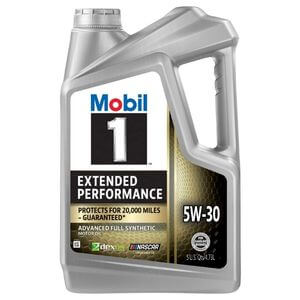
Mobil 1 Extended Performance 5W-30 Motor Oil
Among the synthetic motor oils, Mobil 1 is one of the industry leaders. It occupies the top one because of the detergent qualities. Also, that quality tags this oil as a factory-fill choice and suitable for high-performance engines for a long time.
The manufacturer designed this motor oil to give protection up to 20,000 miles. Moreover, here used advanced full synthetic formula which ensure protection against deposit and sludge build-up.
Therefore, your engine becomes safe for a long time. Also, you can get stable oil viscosity. Whatever your driving condition, this motor oil gives you excellent lubricant and wear protection.
Best Deal
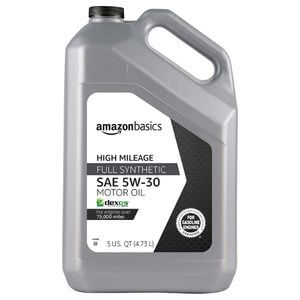
Amazon Basics High Mileage Full Synthetic Motor Oil
Actually, this synthetic motor oil isn’t Amazon’s own brand. You will find various companies selling their product using Amazon’s tag. This cost effective motor oil gains popularity among many car owners.
Using this oil, you can remain tension free for over 75000 miles. Plus, its formula will give you protection against rust and corrosion. If you fear engine wear, then use this motor oil to reduce friction. Finally, you can reduce the exhaust emissions after using this.
What Do Metal Shavings In Oil Mean?
Metal shavings in oil mean the oil is contaminated, and the contaminated oil means your engine can’t get enough lubricant. The presence of access metal shavings in oil creates snowball effects.
[Snowball effects: More metal shavings= More dirtier oil]
Due to the contaminated oil, friction occurs in moving parts too often, making oil even more dirtier and less lubricant.
If the oil becomes less lubricant and can’t provide enough lubrication on those moving parts, then the details will grind into themselves. Hence, those parts may wear out quickly.
Wearing out those items is normal. But, those items need to be filtered out using an oil filter. If any problem occurs in the oil filter, then the oil filter can’t catch all those metal flakes.
The Mobil 1 M1-110A could be one of the best oil filters, especially for those who want an extended performance filtering option. But if you want a highly efficient filter that can hold up to 14 grams of metal shavings, then choosing Bosch 3323 Premium FILTECH Oil Filter could be a great bang for the bucks.
Why Is It Important To Check and Replace Your Vehicle’s Oil Filter Regularly?
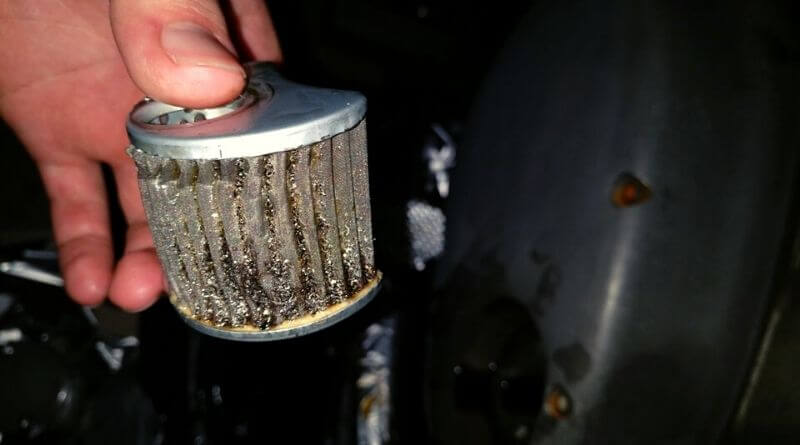
It becomes natural for some metal shaving to slip through the filter and enter the engine. That’s why it is important to check and replace your vehicle’s oil filter regularly.
But, why is it important to check and replace your vehicle’s oil filter regularly?
Besides the natural wear and tear, bearing damage is also a major cause of building metal shaving in your engine oil.
Including parts of engine bearings are small-end and camshaft bearings, main, connecting rod. That bearing may be tri-metal or bi-metal structures.
Usually, a technician uses a magnet to ensure that the engine bearing causes the problem. The magnetic shaving shows the problem is associated with the crankshaft, bearing backing materials, or other engine components.
How To Check for Metal Shavings In Oil?
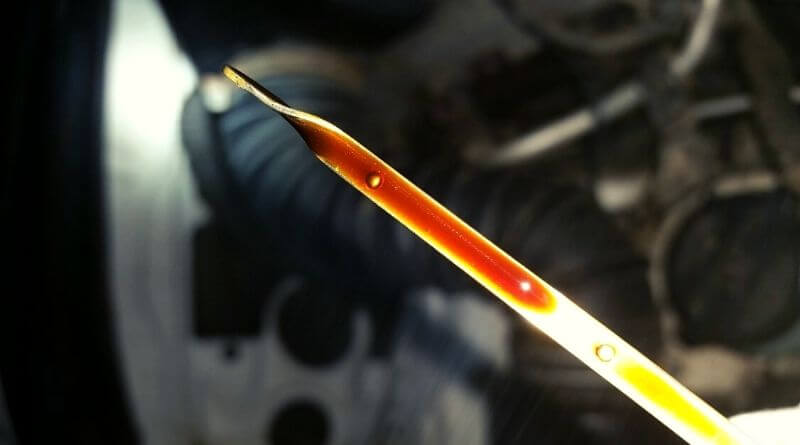
You already know metal shaving can’t detect your naked eyes. But, when you clump those shaves together using a magnet, you can easily notice. You can relate those with silvery sludge. You will find a magnet in some oil drain plugs.
But, most offer nothing like that. Don’t worry; if your oil drain plug comes with no magnet, then analyze the oil. Hence you can tell the metal amount and the types of metal in your oil.
The 2nd checking method is you can open the filter and then pour that oil into a pan.
[When you drain the oil, you need to ensure the clean oil before. Therefore, you can see those small metal flakes in engine oil, but sometimes you can’t see them normally, so don’t worry.]A quick tip: You can use this tip while checking your vehicle’s oil filter; suppose you find tiny debris, for example, 10 to 20 metal particles, then change your oil and filter. Then, you need to check the filter the next day to see whether any improvement is noticeable.
How Do You Know Your Oil Has Metal Shavings?
Some symptoms show your oil has metal shaving. You can keep your vehicle from serious benign damage using those early indications. So, let’s see those in the following.
- Lower engine power: Sometimes, you may need to struggle to accelerate the vehicle. That indicates the engine oil is contaminated, or the filter is damaged.
- Noises (Ticking): Metal shaving retard the smooth oil flowing in the desired places. Due to a lack of proper engine oil, the engine can’t get enough lubricant, resulting in a ticking sound.
- Rough idles: Improper lubrication may lead to friction between different engine parts. Therefore, your engine may shake or vibrate excessively during idling.
- Knocking sound in the engine: If you don’t take proper action, debris and metal shaving buildup in oil may deteriorate engine parts. When fuels burn become uneven in cylinders, then it causes knocking. Therefore, ignited fuel-consuming air produces a clunking sound.
- Exhaust fumes become white: If you notice white exhaust fumes, then take it seriously. Because the white exhaust fumes show, the cylinders may get oil. If you find anything like that, then bring your car to the repair shop asap.
- Poor driving experience: If you ensure proper maintenance of your car, it will give you a great driving experience. But, metal shaving in the oil will create various problems, hence threatening your vehicle’s engine’s performance and health, resulting in a poor driving experience.
Also, the engine warning light shows the symptom of metal shaving in the oil. If you see the light come on, then take the sign seriously. However, you will see the oil change or oil pressure indicator in some old-model cars.
What To Do If There Is Metal In Your Oil?
So, what could be your action when you detect metal in your engine oil? In the following section, we will give you some suggestions to overcome the issues of metal in your oil.
- Firstly, you need to pull off the necessary components like engine covers, valves.
- Now, detect the piston rings and take them out to repair.
- Then, carefully look at your engine to find out any additional issues and then solve those accordingly.
- Next, change the oil and examine whether any metal particle lies in the oil.
- Also, you had better clean and brush off the oil cooler kit to keep it free from metal shaving because the metal shaving usually gathers in that area.
Still Got Questions?
Is it normal to have some metal in oil?
Mechanically, an oil filter is used to catch all the metal flakes. If anything bad happens in the oil filter, the filter can’t see all the metal flakes. Metal flakes or shavings make the oil passages restrict or block. Therefore, the oil flows to the critical component of the engine and eventually damages the engine.
Having some metal in oil is normal. If your vehicle’s engine is new, then some metal is OK. However, if you find an excessive amount of metal shavings, therefore, you need to be serious. Because it shows the engine damage-related issue.
So, when you see such a thing, you need to check the oil and filter and then replace it with a new one. Therefore, you can minimize the risk of metal shaving issues.
What do shiny metallic particles in the oil indicate?
Varnish deposits or carbon deposits are indications of the high-temperature source. You can see oil’s tiny metallic particles using the bright sunlight.
For that, you need to manage the oil sample and bring it to the sunlight. Suppose there lie any tiny particles, for example, microscopic particles of brass. The bright sunlight will help to reflect those particles.
Can you drive a car with metal shavings in oil?
Blood helps a human work; similar oil helps a vehicle run. Oil lubricates the engine’s moving parts. Therefore, it helps to make the operation smooth. If there are any contaminations, for example, metal shaving mixed with oil, your machine can’t function properly.
Metal shaving can do a minor change in your engine, which may affect your engine. Therefore, your driving experience becomes worse. However, if you keep your problem untreated, your engine will become damaged.
How much metal is too much in the oil filter?
The next portion of metal is considered too much in oil filters.
01. A large metal size like a broken lead pencil point or even more, for example, the diameter is 1/16 inch.
02. The metal particles, whiskers, or flakes, over ¼ teaspoon.
If you find those in the oil, ground the engine until determining the metal source.
How often should you change your oil and oil filter?
The average oil changing estimation for a vehicle is every six months or every 3,000 to 5,000 miles. Also, the quality of the oil, the age of your vehicle, driving frequency, and driving habits influence the oil change. If your vehicle is new, you need to wait a little longer between changes.
Final Thought
By now, we can say having too much metal in oil filter isn’t normal. It is true for everything that, if you detect any problem at an early stage, you can easily avoid serious damage to that item.
Hopefully, our comprehensive discussion will help you take proper steps using the symptoms. Although you know how much metal in oil is normal, don’t let this issue untreated because it may lead to serious problems with your engine.
Plus, try to take care of your vehicle, especially the routine check of your oil and oil filter.
Related Posts:
- How long can you drive with bad lifters
- How to clean power steering reservoir
- Can you fix a radiator leak with jb weld
- Is The Jeep Cherokee Frame or Unibody (Briefly Answered) - November 10, 2022
- Are Titan Wheel Spacers Good (The 360 Guidelines) - November 9, 2022
- FCW off Jeep (Is It Important for Your Car) - November 9, 2022
